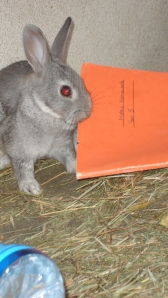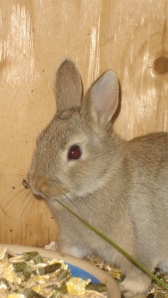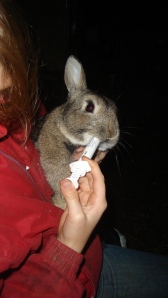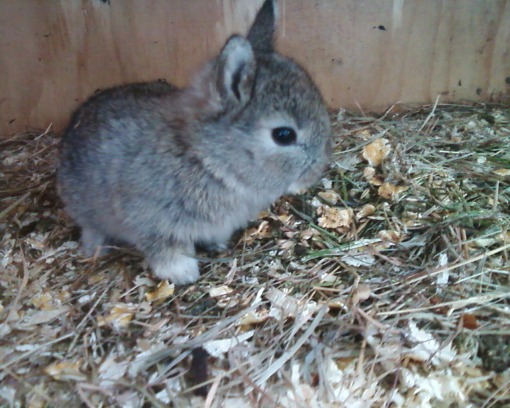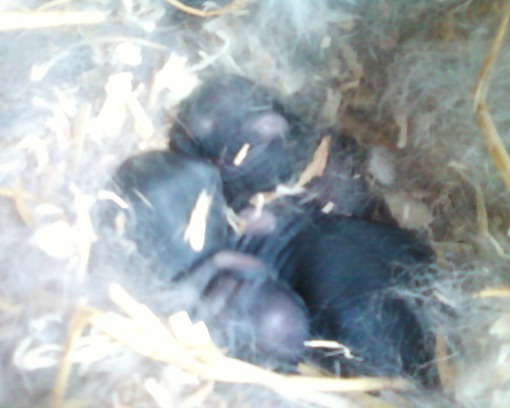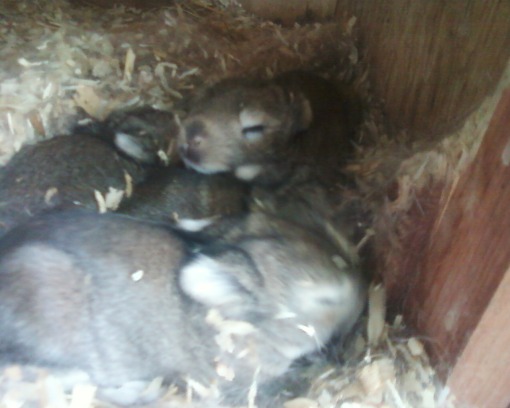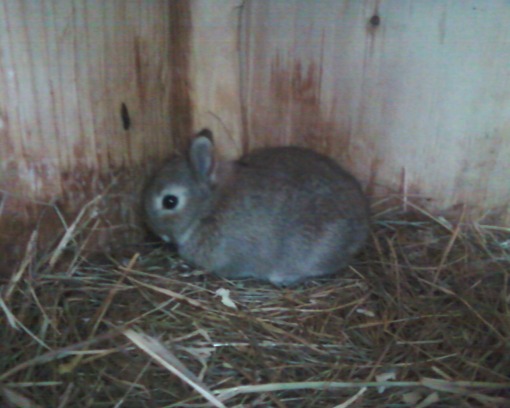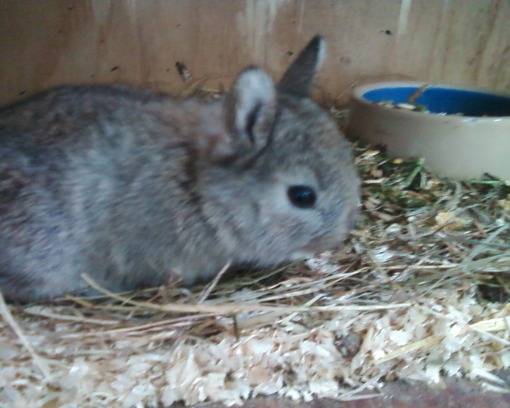Taking home your first rabbit is an exciting time but, as with any new addition to the family, can be a little daunting to begin with. Sometimes it feels as though there are more questions than answers. In this article, we will try to answer some of those questions.
How big a hutch do I need for my rabbit?
The minimum size for a hutch should be 4′ x 2′. If this can be divided up to provide interest, so much the better – can you make a box for him to go into? Or a shelf to jump up onto? Or divide off part of the hutch with a jump through hole? Can the hutch have two levels? The more variety you can provide for your rabbit, the more he can amuse himself and also let you know what he likes. One rabbit we had used to spend all day jumping over the divider in his hutch – not through the hole which was made for the purpose, over the TOP of the divider.
If you can make it safe, all rabbits benefit from having a run in the garden that they can go out into during the day. Make sure they have somewhere to shelter from the weather – either too much sun OR bad weather. The opportunity to hop around outside and nibble the grass is a huge benefit to them.
Does my rabbit have to live in a hutch?
No, your rabbit can live in your house just like a cat or a dog. He will need a litter tray which, apparently, they soon learn to use just like a cat. You will need to be careful of electric cables which a rabbit could chew – maybe enclose them in plastic casing – and also be aware of anything else that he might nibble at.
What should I feed my new rabbit?
First of all, ask the seller what the rabbit is eating at the moment. Whenever we sell a rabbit, we always provide the new owner with a bag of food as a starter pack. This can then be mixed with any new feed and make the transition easier and less stressful for everybody involved. Rabbits can be quite conservative in their eating habits and sometimes treat new food with suspicion – even something that you think will be a treat for them, will only be nibbled at until they are used to it. As rabbits really need to keep food moving through their stomach, a couple of days without eating can be extremely bad for a them. Mixing any new food with something they are already used to can make the move far easier.
As a rough guide, you will need to feed your rabbit either pellets or a coarse mix designed for rabbits, hay, and green food.
What kind of green food should I offer?
That is a personal choice for you and your rabbit (they have personal likes and dislikes just as we do). You can grow, or pick wild herbs, weeds and grasses. You can find out what he likes and feed him your carrot peelings, apple cores etc. Or you can buy veg specially for him when you do your weekly shopping. The choice is entirely yours, but he will need fresh feed to keep him healthy.
Some dos and don’ts on green food:
DON’T feed lettuce, cabbage, parsnips, frozen veg, evergreens.
DO try corn on the cob, sweet potatoes, lucerne (alfalfa), sugar beet, radishes, swede and trunips. Carrots are good as long as they haven’t been sprayed with insecticide. Strawberry leaves, raspberry canes and leaves, blackberry leaves, and any fruit bush or tree prunings.
From the flower beds you can try them on marigolds, asters, nasturtiums, roses, juniper, sunflowers and mallow.
Will my rabbit need vitamin supplements?
If rabbit feed is provided, then most of your bunny’s nutritional needs should be catered for, but it is always worth providing a mineral lick for him. That way he will take as much as he needs when he needs it.
What about water?
Rabbits, like all animals, should have constant access to fresh clean water. Here you have a choice between a bottle which attaches to the outside of the cage, or a bowl.
Very often a rabbit will play with his water bowl, tip it over, stand in it, poo in it etc. We have one bunny who, when he was younger, would deliberately tip his bowl over, pick it up and toss it from end to end of his hutch. So bowls need careful watching, topping up and cleaning regularly.
Bottles, on the other hand, seem a little easier but I personally find bottles harder to keep clean – they end up with a limescale deposit in the nozzle and a green film in the actual bottle that can be difficult to remove. The danger that we discovered with bottles comes from the wire with which you fasten them to the cage. We lost one rabbit very suddenly and unexpectedly and, when we had the vet do a a post mortem on her, we discovered that she had chewed off and swallowed a piece of the wire which had subsequently perforated her stomach. So we are now very careful about using bottles with those rabbits we know to be chewers.
What veterinary treatment will my rabbit need?
Your rabbit will need worming 3 – 4 times per year with an approved rabbit wormer. You can do this yourself although it might be worth asking your vet to show you how the first time if you are worried about it.
Occasionally rabbits need treating for fleas just like any other animal. You don’t need to routinely dose them for fleas, but do make it part of your regular routine to check them carefully.
Rabbits should be vaccinated against mixymatosis.
His nails will need clipping regularly. This is something else that you can do for yourself – get the vet or vet nurse to show you how, and get a pair of proper clippers and your rabbit will soon get used to letting you do them.
Occasionally rabbits also need their teeth clipping. Not all rabbits suffer from this, but look at his teeth when you check him over. Although you can do this yourself, it is probably better to let the vet have a look at them, show you how, and discuss when they should be done.
Do rabbits need toys?
A common misconception with rabbits is that they will contentedly sit in a 4′ x 2′ hutch 24/7 and stare at the walls. Rabbits “will” do this and it says a lot for their characters that they will survive this where most other animals would pine away.
But and it is a big BUT, rabbits are social, intelligent animals who really need more from life than this.
If you place an object in their hutch, many will find a way to play with it. We use old sections of stove pipe for them to run through as tunnels, objects like plastic feed bowls or hard rubber balls are popular things for them to “fiddle” with. One of our bucks loves a plastic hosepipe hanger. It is lightweight and he moves it around and around his hutch until he is happy and then jumps backwards and forwards over it to his heart’s content.
Rabbit toys don’t need to be expensive, shop-bought ones. Just remember that, being rabbits, they WILL chew them so try to find things that are safe for them.
Do rabbits like being handled?
In my experience, the answer to this is a huge YES. As long as they have been handled regularly and gently, rabbits love the attention and company. When the apprentice was younger, she would sit IN the hutch of her buck “Smudge” and he would immediately hop into her lap for a cuddle. One of our current bucks, “Treacle” loves to come out of his hutch and jump over whatever obstacles the apprentice sets out for him. Rabbits are all individuals, but they are never “just rabbits” 🙂
Do you have any advice for new rabbit owners? Or are you a new owner and have a question? Click here to comment
Everything you wanted to know about baby rabbits

